Earlier this year, Realme launched its Narzo 10 series of smartphones and they have been marketed as devices that deliver good mobile gaming performance on a budget. The new Narzo 20 Series is said to offer subtle upgrades over the older series.
Also added in this refresh cycle, is the introduction of the new Narzo 20 Pro. The ‘Pro’ model is supposed to offer the best gaming-grade hardware possible by Realme at budget pricing.
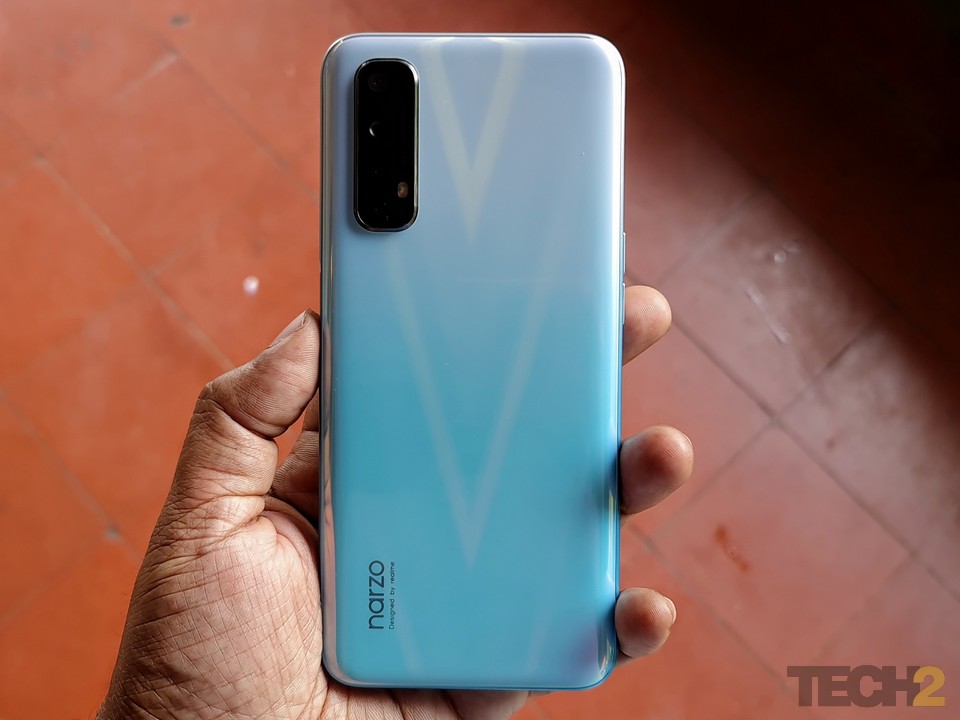
Realme Narzo 20 Pro. Image: Tech2/Sheldon Pinto
But after using my Realme Narzo 20 Pro review unit for a week, I’m not convinced about it’s “Pro gamer” branding even in the budget smartphone range.
So, let’s take a deep dive into the aspects that make it a gaming smartphone. In short, it’s all about that 90Hz display, the gaming-grade MediaTek Helio G95 chipset’s performance, and — since it’s a gaming smartphone — also check out how that not-so-vital camera performs.
It’s a 90Hz display
The display gets the job done for an average LCD panel, but the colours are a bit saturated and there’s a minor blue tint to it. You can adjust the screen colour temperature and attempt to fix the whitepoint, but there’s strangely no presets to adjust the colour scheme, so you will be stuck with the saturated colours. However, such a display may play well with the gaming audience that this phone has been designed for.
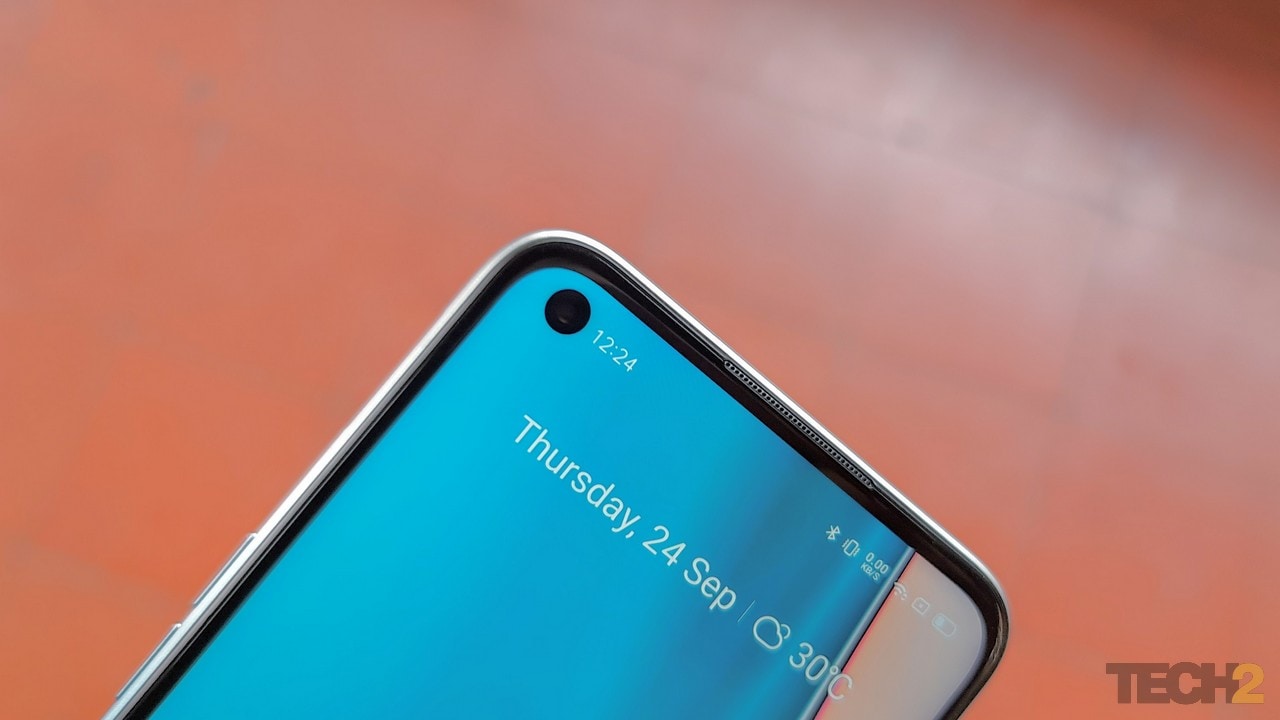
The display gets the job done for an average LCD panel, but the colours are a bit saturated and there’s a minor blue tint to it. Image: Tech2/Sheldon Pinto
The jump from a well-optimised 60hz refresh rate display to a budget 90Hz display, isn’t a big one. You need proper software optimisations to make the device feel fluid, which is not the case with the Narzo 20 Pro, as you will discover in the software section of this review.
The OnePlus Nord is a good example of how hardware and software play a vital role when you crank up the display to 90Hz for a fluid experience. But all this falls into place at a higher price tag. Why include a mediocre 90Hz display then? It feels like Realme had a box to tick, which they did.
The display is also a smudge magnet. I have peeled off the screen protector of every single smartphone I have reviewed till date. Naturally, I did the same with the Realme Narzo 20 Pro review unit.
It turned out to be a smudgy mess, because the display does not seem to have an oleophobic coating of any sort. The smudges don’t wipe off easily either, so keep a bottle of lens cleaner handy if you are buying one.
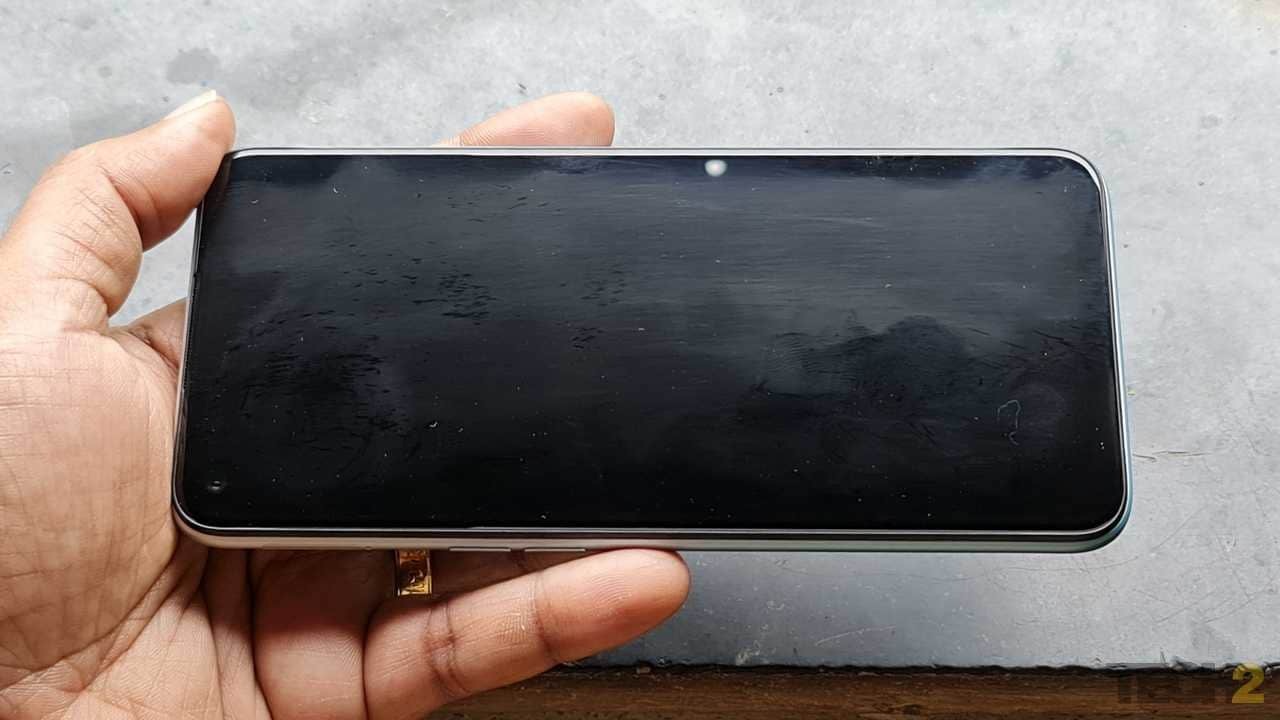
The display is also a smudge magnet. Image: Tech2/Sheldon Pinto
Making things worse, is the fact that the 20 Pro is meant to be a gamer’s smartphone. This means greasy palms and sweaty hands after hour long sessions of Call of Duty: Mobile. As expected, even after a short gaming session, you can actually tell whether I was playing COD or Asphalt by just looking at the smudge patterns on the display.
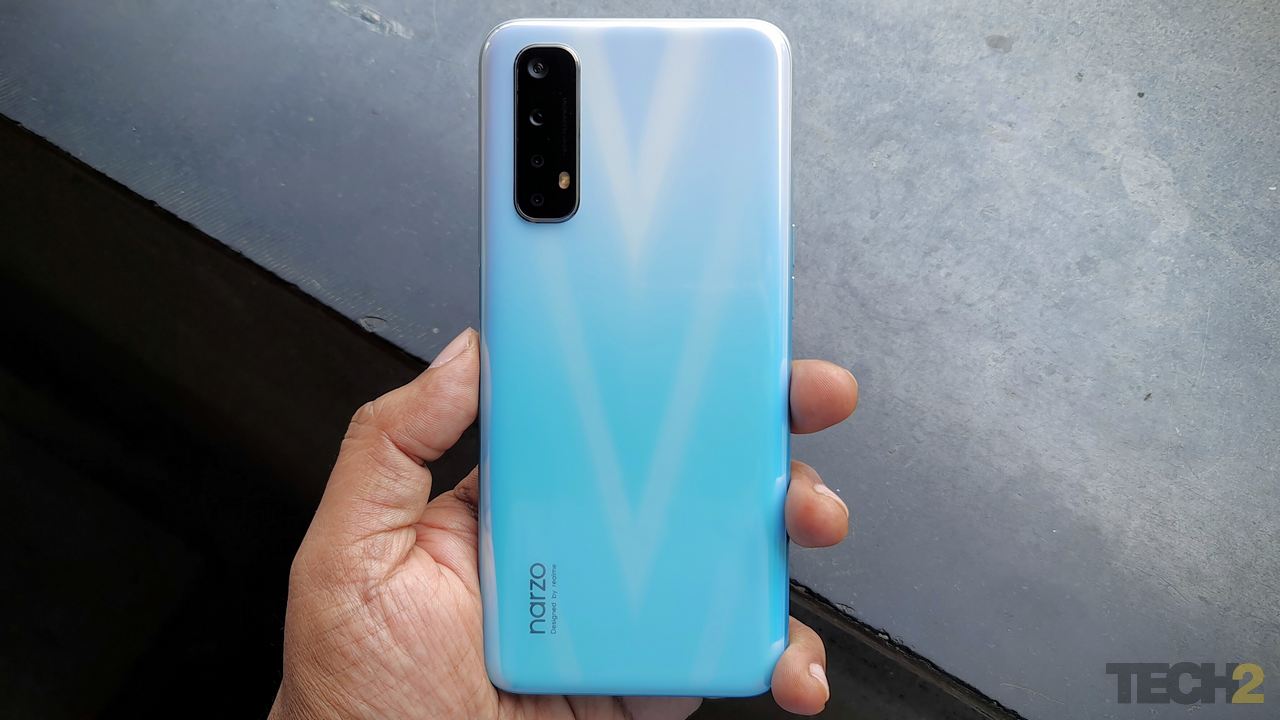
It’s a subtle, classy-looking design, but not loud, radical or industrial-looking that the young, mobile gaming audience would like it to be. Image: Tech2/Sheldon Pinto
I liked the V-shaped texture on the back of the Narzo 20 Pro. The Ninja White variant is anything but white. However, my problem with it is that it does not scream “gaming” from any angle. It’s a subtle, classy-looking design, but not loud, radical or industrial-looking that the young, mobile gaming audience would like it to be.
Software needs some polish
As for the Realme UI software experience, it did not give me those 90Hz refresh rate feels and this could be down to the stuttery UI.
There are hiccups from time to time. When swiping between home screen pages, swiping through the Google News feed, pulling down the notifications bar or even scrolling web pages in the Chrome browser. These jitters are everywhere, and they get annoying after a point, making you question what that 90Hz display is bringing to the table.
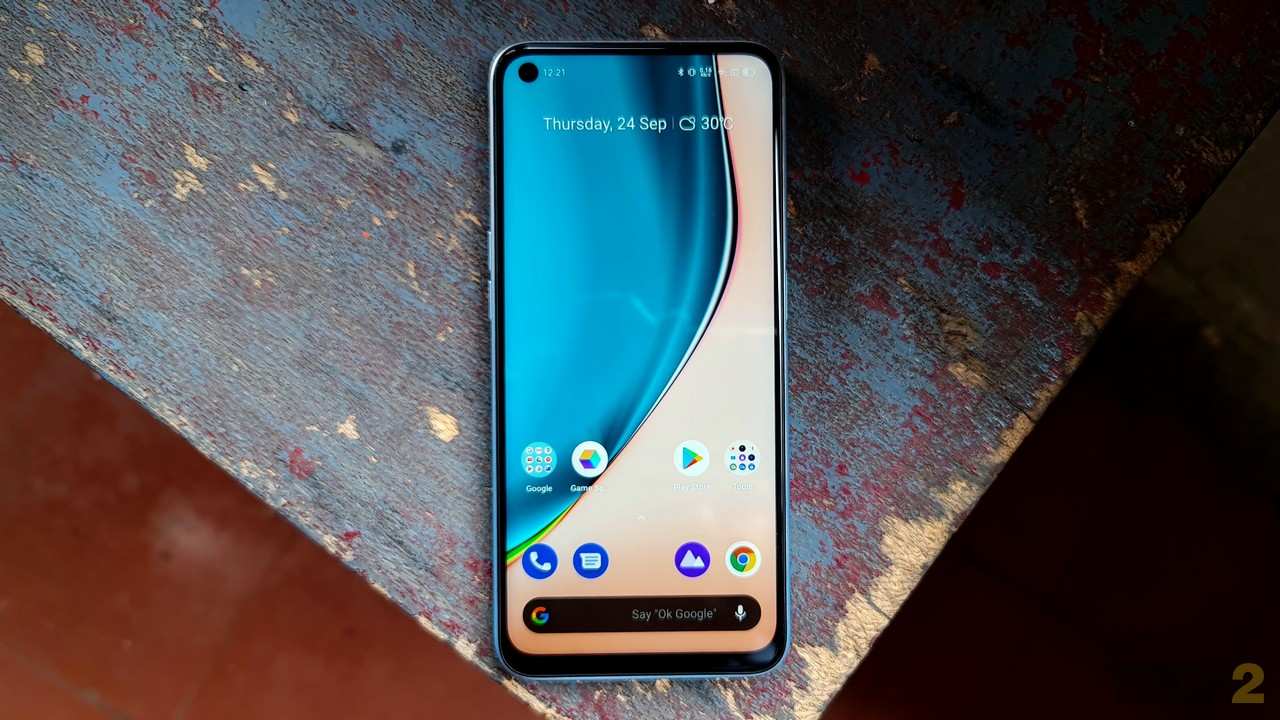
Realme UI software experience did not give me those 90Hz refresh rate feels. Image: Tech2/Sheldon Pinto
In short, there are a few software optimisation issues (which could be down to that shiny new MediaTek chipset). These are minor hiccups that can hopefully be resolved with an upcoming software update. But as of typing this review, there hasn’t been one.
The good bit is that once you are in an app, things are quite smooth. Whether that’s scrolling through Instagram feeds, YouTube videos, lengthy WhatsApp chats, it’s a nice and smooth experience, provided you stay inside an app.
Gaming performance is a mixed bag
And with that, let’s take a look at how this smartphone fares when it comes to gaming — the sole reason for its existence.
The MediaTek Helio G90T had quite a reputation for delivering crazy-good gaming performance, but it was also a power hog on the Redmi Note 8 Pro. Things have improved with the (12nm) Helio G95, as the power issue seems to have been taken care of thanks to Realme’s software optimisations.

The MediaTek Helio G90T had quite a reputation for delivering crazy-good gaming performance. Image: Tech2/Sheldon Pinto
The new chipset features the same architecture, but bumps up the GPU clock speed to 900 Mhz, and it’s good enough to get you some high-end gaming.
With PUBG no more (for now), I tried out Call of Duty: Mobile, Asphalt 9 Legends, Shadowgun Legends, and the rather graphics-heavy PC to mobile port, MudRunner.
Save for COD: Mobile, the rest of the games worked as expected with graphics settings maxed out (or set to High). The games ran smoothly without any hiccups, which is impressive given that it’s a budget smartphone.
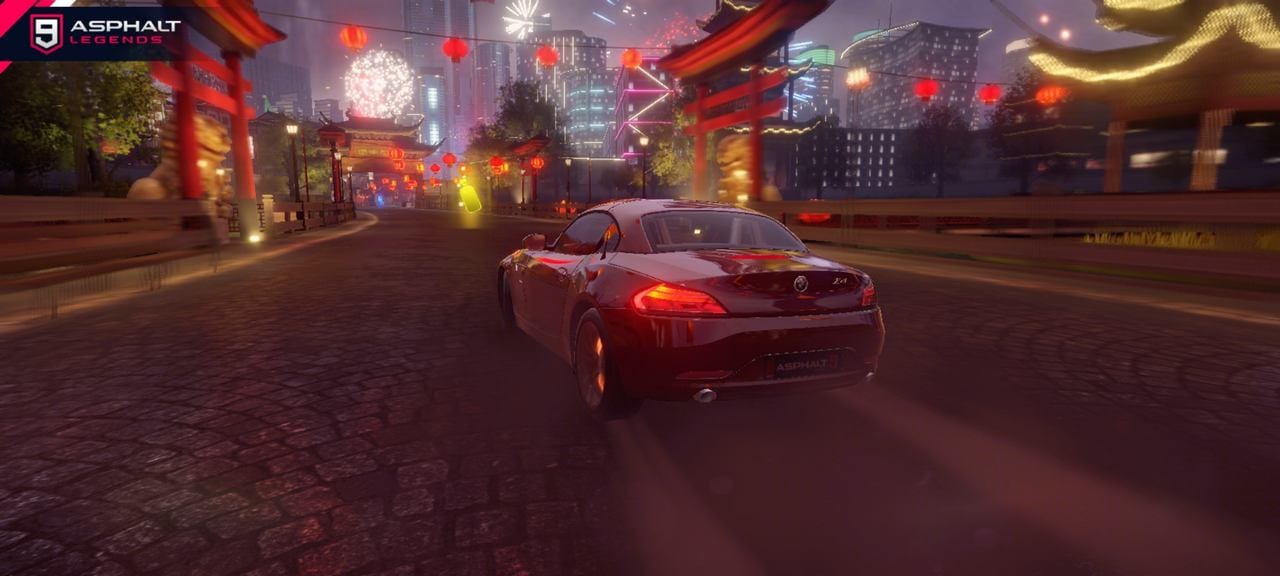
Asphalt 9 Legends at High Quality graphics settings on the Realme Narzo 20 Pro
The phone does warm up after about 20 minutes of gameplay, but you really cannot feel the warmth at the back. On the front, the display glass does heat up, but again it does not get as hot as it does on the Realme 7 Pro, which is a thinner smartphone overall.
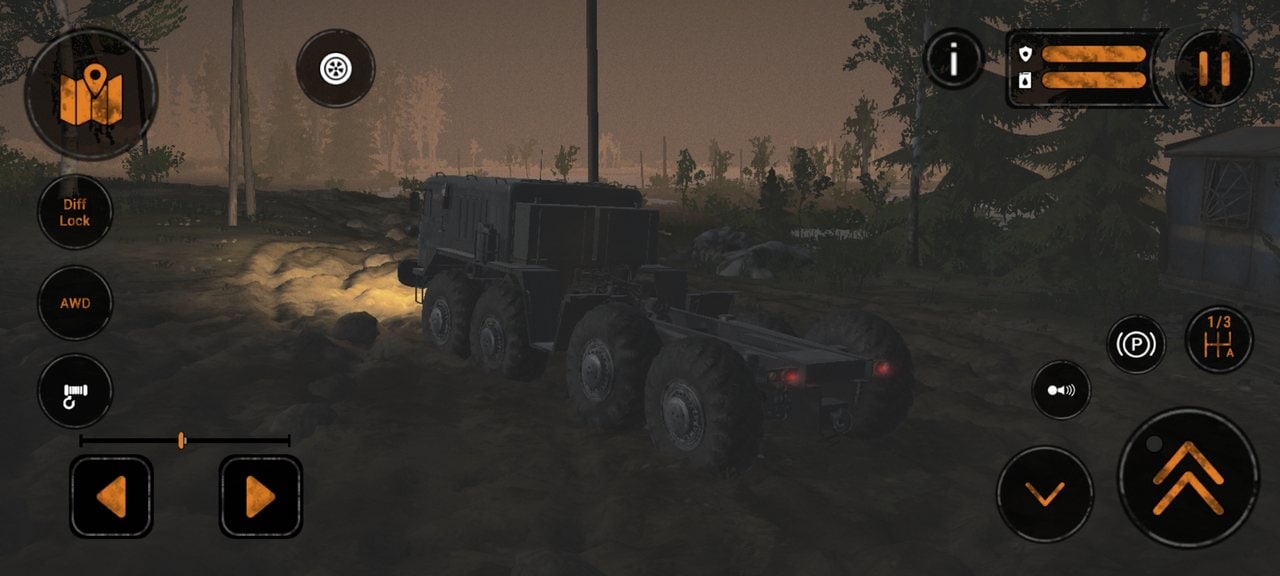
MudRunner on the Realme Narzo 20 Pro
Coming to COD: Mobile, the experience was not so great. Gameplay was a bit stuttery at ‘Very High’ graphics settings and not as smooth as what you get on the Realme 7 Pro or even the Poco M2 Pro.
This is indeed an optimisation issue, as the chipset itself is fairly new. But the game also does not allow you to max out the graphics settings like on the (8nm) Snapdragon 720G-powered Realme 7 Pro that I tested earlier. The Narzo 20 Pro simply does not show the ‘Very High’ frame rate setting.
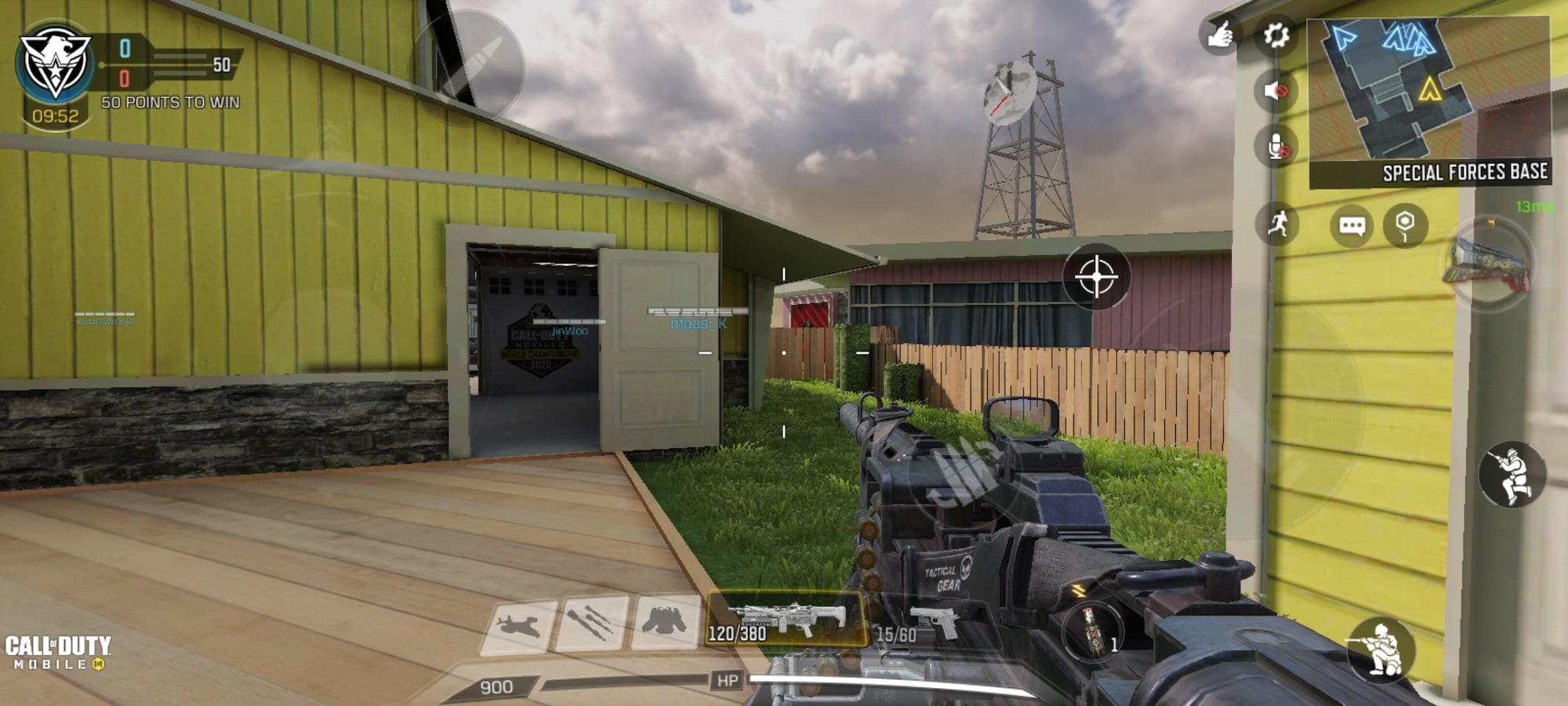
Call of Duty: Mobile ran best at Medium graphics and frame rate
Another problem is that the phone heats up while playing COD:Mobile at anything over ‘Medium’ graphics. The phone gets unbearably hot on the front display, and things like loading characters, menus and other parts start to slow down after a couple of games.
The display’s touch sampling rate is also a concern.
A detail to keep in mind about high refresh rate screens is that you will mostly end up using that 90Hz refresh rate in day-to-day use. This will include switching between apps, scrolling through news feeds, chats etc. Screen refresh rate has little to do with the actual mobile gaming experience, as the hardware in most budget smartphones can barely keep up with a 60Hz screen, or even cross the 40fps mark. So, it’s really the screen’s touch sampling rate that matters here. That turned out to be a problem on the Narzo 20 Pro.
I mostly noticed this touch sensitivity issue while playing multiplayer FPS games. There is noticeable lag when you are trying to aim and the display seems to have a hard time keeping up, which also meant that I lost a lot of Frontline battles in COD.
The lag was present with Shadowgun Legends as well, but it did not affect the gameplay much, as I usually go with single player missions which can be played at a much slower pace.
This is mostly a problem for fast-paced multiplayer games like COD, Fortnite, PUBG and the like, where there’s another player (not a bot) that’s pointing a gun at you and you need to take them down before they the same to you.
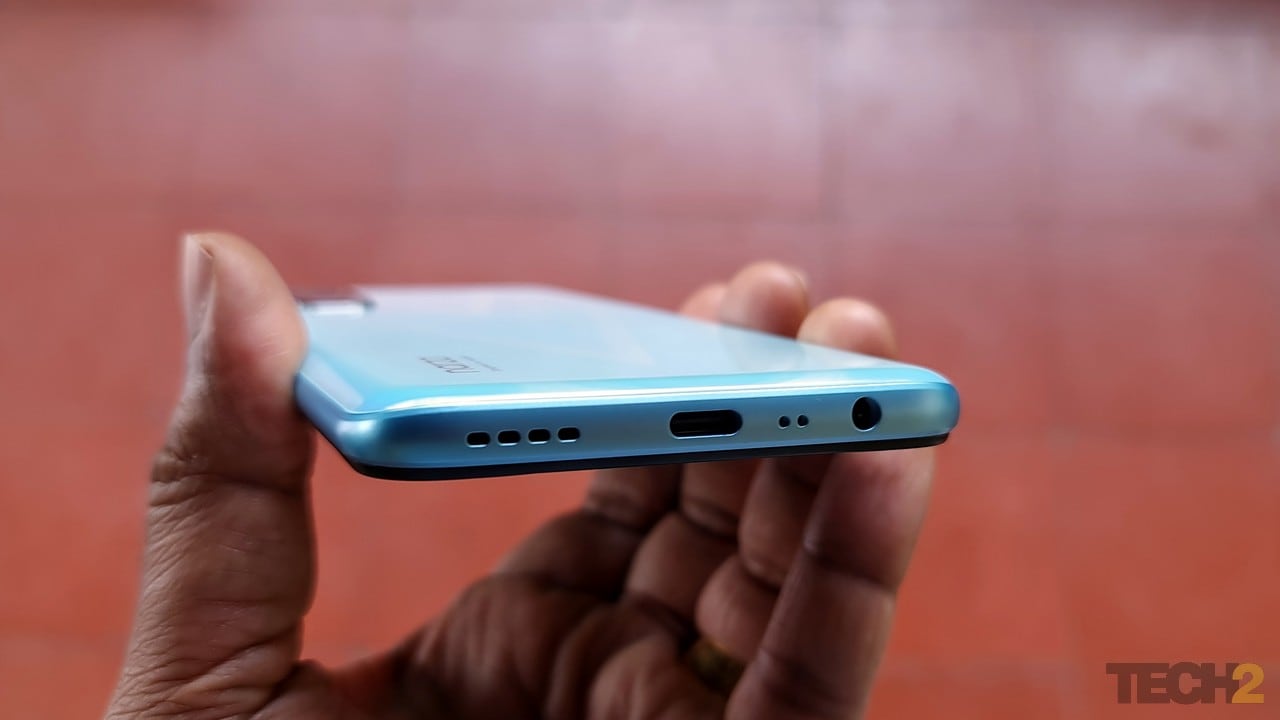
The bottom-firing speaker is loud but quite harsh and definitely not clear. Image: Tech2/Sheldon Pinto
As for the single bottom-firing speaker, it’s loud but quite harsh and definitely not clear. It’s best to plug in a pair of third-party earphones before jumping into a game.
Great battery life
The 4,500 mAh battery keeps this gaming machine running all day, given the heavy gaming usage most users will buy this phone for. I was always left with a good 30 percent charge by the end of the day, and almost never felt the need to reach for the charger by the end of a long work day. This meant that there was enough juice left for a couple of hours of video streaming before plugging it in and jumping into bed.
Unlike most other budget gaming smartphones, there’s a 65W Super Dart charging system available with the Narzo 20 Pro. You may have to roam around with a large charging brick and a thick cable, but believe me, it’s worth that extra bulk. The phone goes from 0-100 percent in the claimed 38 minutes, which is class-leading for a budget smartphone in this segment!
The camera’s not bad
Click here to see the camera samples:
You don’t usually expect the cameras on a gaming smartphone to get the job done, but this one is quite good for still photography. There’s a 48 MP primary camera that has decent dynamic range and a good amount of resolved detail as well. The colours too look quite natural (not on the phone’s saturated display, but on a laptop) and I noticed similar results when using the 16 MP selfie camera as well. The phone does a good job with edge detection as well, whether it’s software-enabled on the front camera or with the help of the B&W portrait camera on the back. The 8 MP ultra-wide angle camera also gets you good photos — provided there’s enough light in the scene — but falls a bit short on details. The 2 MP macro camera is simply there to fill up the spec sheet.
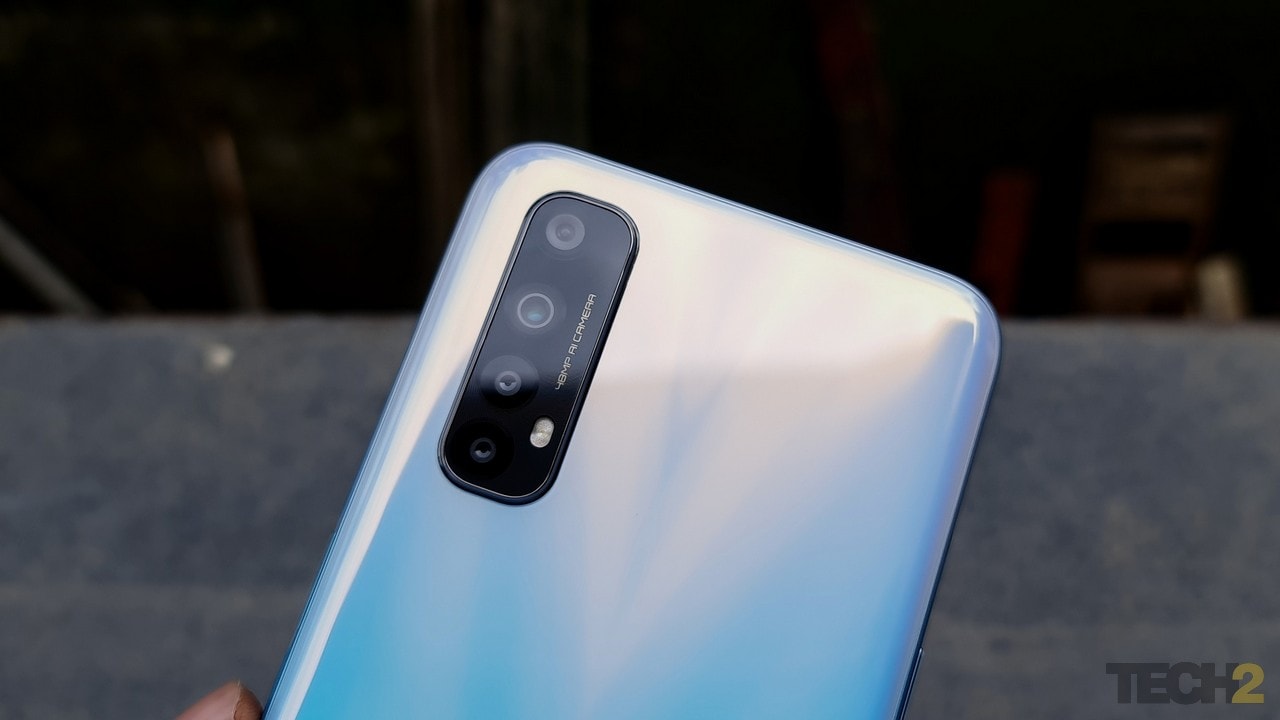
You don’t usually expect the cameras on a gaming smartphone to get the job done, but this one is quite good for still photography. Image: Tech2/Sheldon Pinto
In low light, details take quite a hit, no matter which camera you use. A lot of detail is lost thanks to the severe noise reduction, and this applies to the selfie camera as well. The ‘Night’ mode does not improve things drastically; detail still fall short, but you do get better dynamic range.
Video recording is decent at best, and you should use it only if you desperately need to. 4K mode produces the best overall video quality, but It lacks any stabilisation. The 1080p 30fps video falls drastically short on detail, and the exposure keeps on shifting as you pan through a scene. The 1080p 60fps video is better than the 30fps footage, but has the same exposure issues along with a focus hopping problem.
Should you buy one?
I received the top-end variant of the Realme Narzo 20 Pro, that’s priced at Rs 16,999 for the 8GB RAM + 128GB storage variant. The base 6GB RAM + 64GB storage variant is priced at Rs 14,999. Unfortunately, I cannot recommend either because a clutch of issues I encountered during the review period.
At Rs 14,999, I would instead recommend the Poco M2 Pro as a better gaming smartphone. Indeed, it makes more sense now than it did at launch. The M2 Pro gets you a solid 120Hz touch sampling rate, 33W charging, a capable Snapdragon 720G chipset, a nice haptic motor and slightly better cameras with a 5MP macro.
If you are willing to spend an additional Rs 2000, I would also recommend the recently announced Poco X3. Launched at Rs 16,999, it seems like a better smartphone on paper over the Poco X2, with a 240 Hz touch sampling rate, a Snapdragon 732G chipset and a 6,000 mAh battery. But wait for our upcoming review before you go for one.
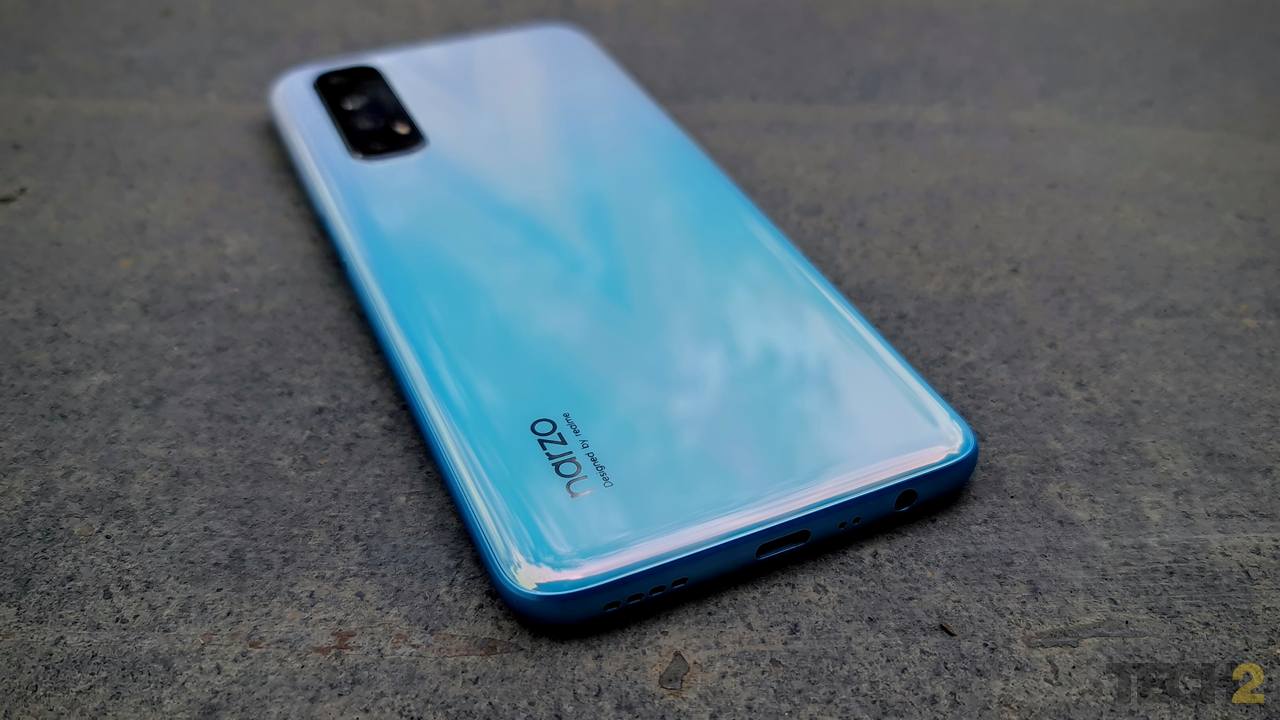
There’s really no need for the Narzo 20 Pro to exist; the Realme 7 is a better package with similar hardware. Image: Tech2/Sheldon Pinto
Another reason why the Narzo 20 Pro lacks appeal is because of its own sibling, the Realme 7 (review). At Rs 14,999, The Realme 7 is not a gaming smartphone, but a better budget smartphone package that’s got the gaming guts of the Narzo 20 Pro.
The Narzo 20 Pro is in a curious position: the Realme 7 is a better package with similar hardware. Even for the serious gamer who plays a lot of FPS games, the Narzo 20 Pro falls short.
Find latest and upcoming tech gadgets online on Tech2 Gadgets. Get technology news, gadgets reviews & ratings. Popular gadgets including laptop, tablet and mobile specifications, features, prices, comparison.

Post a Comment